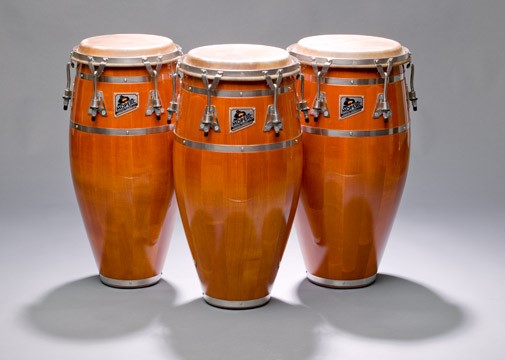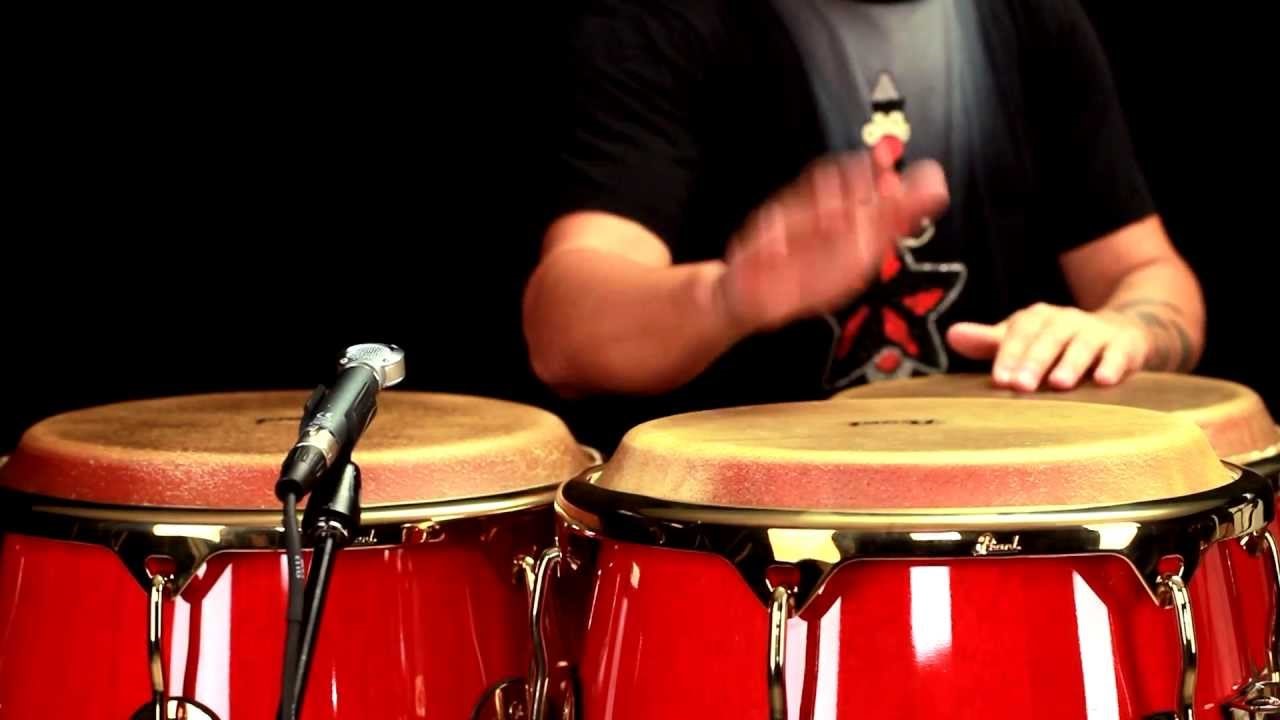Het is ‘Wist je dat?’ –woensdag!
(Geschreven door: Roberto Gutierrez)
We willen graag met jullie allerlei info en weetjes delen over salsa/latin cultuur: de muziek, de dans, de artiesten en heel belangrijk de geschiedenis. Voor sommigen zullen bepaalde feitjes al bekend zijn en voor anderen totaal niet. Het gaat erom dat iedereen iets meekrijgt van deze mooie cultuur.
Vandaag hebben we het over het instrument de Conga (Tumbadora).

Wist je dat:
- Conga’s cilindrische uitgeholde drums zijn en bestaan uit meestal uit 3 maten/groottes:
Quinto(kleinste drum) ca. 27,9 cm vel-diameter – Tres Dos of ‘Conga’(middelste drum) ca. 29,8 cm vel-diameter – Tumbadora (grootste drum) ca. 31,7 cm vel-diameter
- Er bestaan ook nog andere maten zoals Requinto(extra small) and Supertumba (extra large)
- De kop van de conga oorspronkelijk was gemaakt van dierenhuid (koe of buffel) en de drum zelf oorspronkelijk van hout. Tegenwoordig wordt de kop ook gemaakt van kunstvel en de conga zelf ook wel van fibreglas.
- de oorspronkelijke naam van de conga drums, eigenlijk ‘tumbadora’ is. In Cuba kennen ze de naam ‘Conga’ voor een specifieke drum die bij een specifiek ritme hoort dat tijdens het Cubaans Carnaval werd gespeeld.
- Een nummer van bandleider Don Azpiazú in 1930, genaamd ‘La Conga’ zorgde er onder andere voor dat in de VS cubaanse drums onder de verzamel naam Conga vielen.
- Zowel Afrikaanse als Cubaanse drums invloed hebben gehad op de evolutie van de Conga. Afrikaanse drums zoals ,”Makuta’’, “Yuka”, “Bembe” (dit zijn ook de namen van de ritmes die op de drums werden gespeeld) waren de voorouders van de Conga en werden gebruikt voor typische Afro-Cubaanse muziek. Klik hier onder om te luisteren hoe ze klinken:
- De Cubaanse ‘Cajon’ (‘doos’) is een ook een voorouder van de conga en bestaat net als de huidige conga uit drie groottes. De Cajon werd gebruikt bij Rumba muziek. Deze muziek ontstond in ‘solares’ (sloppenwijken) van o.a. Havana en Matanzas na de afschaffing van de slavernij in Cuba.
- Klik hier om te zien hoe Cajon drums worden bespeeld:
- De conga drums tot ongeveer 1930 alleen maar in Rumba muziek werden gebruikt. De conga werd gezien als een inferieur instrument vanwege de afkomst uit de ‘solares’. Pas rond 1940 werd de conga opgenomen in populaire Cubaanse muziek. Bandleider Arsenio Rodriguez standaardiseerde het instrument in zijn ‘Conjunto’ band ensembles.
- In de VS was ‘Machito and his AfroCubans’ de eerste band die een conga, standaard in de instrumentatie had.
- Andere bekende congaspelers zijn: Chano Pozo, Carlos “patato” Valdez, Mongo Santamaria, Candido Camero, Poncho Sanchez, Francisco Aguabella, Ray Baretto, Giovani Hidalgo.
- Een van de bekende afrocubaanse Conga ritmes is de ‘tumbao’ en vind je terug in bijna alle salsa muziek.
- Als je salsa ‘on 2’ danst markeer je de ‘slap’ van de Conga op tel 2 met je pasjes.Klik hier om te luisteren naar een tumbao ritme en luister of je de slaps (in muziek steeds op tel 2) kunt horen.
We hopen dat je deze weetjes interessant vond. Wil je meer weten over Conga’s? Voel je vrij om lekker op onderzoek uit te gaan op internet. Je kunt veel over dit instrument terug vinden!
It’s ‘Did you know?‘ – Wednesday!
(Written by: Roberto Gutierrez)
We would like to share with you lots of information about our salsa/latin culture, about the music, about the beautiful dance, the amazing artists and the rich history and traditions. For some of you the facts that we share might already be known, for others it might be new information.
The topic of this weeks blog is the instrument the conga drum (tumbadora).

Did you know that:
- That Conga drums are hollow cyllindric drums that exist in 3 sizes:
Quinto(smallest drum) ca. 27,9 cm vel-diameter – Tres Dos of ‘Conga’(middle drum) ca. 29,8 cm vel-diameter – Tumbadora (largest drum) ca. 31,7 cm vel-diameter
- Then you also have the Requinto (extra small) and Supertumbao (extra large)
- The head of the conga used to be made of rawhide (cow of buffalo) and the conga itself made of wood. Today the head are synthetic and the conga shell are made of fibreglass.
- The original name of the conga drum is Tumbadora. In Cuba the Conga drum is a specific drum used in a rhythm called ‘Conga’ that was played in the streets at the Cuban Carnival.
- A song from bandleader Don Azpiazú in 1930, called ‘La Conga’ was said being responsible for the use of the name Conga for Cuban drums.
- The conga has evolved from african and cuban drums. The African drums ‘ Makuta’, ‘Yuka’ and ‘Bembe’ (also the names of the rhythms played on these drums) are the predecessors of the conga that are used in typical Afro-cuban music. Click to listen to these rhythms:
- The cuban drum ’Cajon’ (means box) has 3 sizes (like modern conga’s). The Cajon was used in Rumba music. This music is developed in the ‘solares’ (slums) in Havana and Matanzas after the abolishment of slavery in Cuba.
Click here to see how traditional cuban Cajon is being played:
- When the Cajon evolved into conga drums the conga drums were only used in Rumba music until the early 1930’s. After that the conga was becoming more mainstream.
- Only after 1940 the conga drums were standardized by Arsenio Rodriguez into popular Cuban music. He standardized the conga in his Conjunto band ensemble.
- In the US ‘Machito and his afrocubans’ was the first band to use an authentic tumbadora in it’s band instrumentation.
- Other wellknown Congueros (congaplayers) are: Chano Pozo, Carlos “patato VAldez, Mongo Santamaria, Candido Camero, Poncho Sanchez, Francisco Aguabella, Ray Baretto, Giovani Hidalgo,
- One of the afrocuban conga rhythms is the ‘tumbao’. When you dance ‘salsa on 2’ you mark the conga slap on beat 2.
- Click here to listen to the tumbao rhythm and see if you can hear the slaps:
We hope you liked these facts and if you want to know more about the conga, please feel free to search more information about this instrument on the internet.





